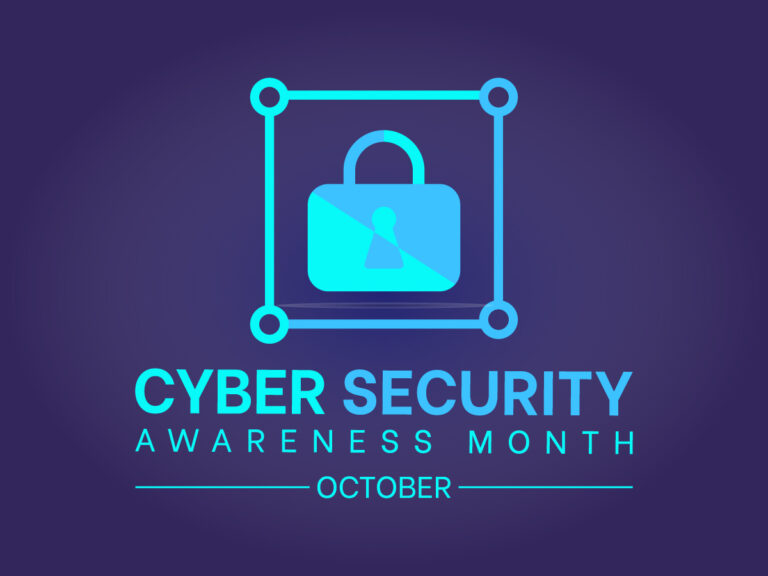Cybersecurity is a vital aspect of any business, especially for small and medium enterprises (SMEs) that rely on the Internet for their daily operations. However, many SMEs may not have the resources or expertise to implement effective cybersecurity measures, leaving them vulnerable to cyberattacks that can compromise their data, reputation, and revenue. In this blog post, we will share some practical tips on how SMEs can improve their cybersecurity during Cybersecurity Month and beyond.
Cybersecurity Month is an annual initiative that aims to raise awareness and educate individuals and organizations about the importance of cybersecurity and how to protect themselves online. It is celebrated every October in Canada and the United States, and in Europe as European Cybersecurity Month. The theme for this year’s Cybersecurity Month is “Do Your Part. #BeCyberSmart.”, which encourages everyone to take proactive steps to enhance their cybersecurity and help create a safer and more secure cyberspace.
Here are some of the steps that SMEs can take to do their part and be cyber smart:
- Identify and prioritize your main assets and threats. Before you can protect your business from cyber threats, you need to know what you are protecting and what you are protecting it from. Identify your most valuable and sensitive data, such as customer information, financial records, intellectual property, etc., and where it is stored, accessed, and transmitted. Also, identify the main cyber threats that your business faces, such as phishing, malware, ransomware, denial-of-service attacks, etc., and how they can affect your business operations, reputation, and revenue. By knowing your assets and threats, you can allocate your resources and efforts more effectively and efficiently (1).
- Have a cybersecurity policy and an incident response plan. A cybersecurity policy is a document that outlines the rules, roles, and responsibilities for ensuring the security of your business data and systems. It should cover topics such as password management, access control, backup and recovery, encryption, software updates, employee training, etc. A cybersecurity policy helps you establish a clear and consistent framework for managing your cybersecurity risks and expectations (2). An incident response plan is a document that describes the steps to take in the event of a cyberattack or breach. It should include details such as who to contact, what to do, how to communicate, how to contain the damage, how to restore normal operations, etc. An incident response plan helps you prepare for and respond to cyber incidents quickly and effectively (2).
- Invest in cybersecurity culture and training. One of the most common ways that cyberattacks succeed is by exploiting human errors or weaknesses. For example, phishing emails are designed to trick users into clicking on malicious links or attachments, or divulging sensitive information. Therefore, it is essential to raise awareness and train employees in cybersecurity best practices, such as how to spot and avoid phishing emails, how to create and use strong passwords or passphrases (3), how to use two-factor authentication, how to browse the web securely, how to use social media responsibly (4), etc.
- Use smart security tools. There are many tools available that can help you enhance your cybersecurity without requiring too much technical expertise or investment. For example, antivirus software can help you detect and remove malware from your devices; firewall software can help you block unauthorized or malicious network traffic; encryption software can help you protect your data from unauthorized access or theft; backup software can help you create copies of your data in case of loss or corruption; cloud services can help you store your data securely online; etc. However, when using these tools, make sure that they are from reputable sources, that they are updated regularly, and that they are configured properly according to your needs.
- Seek professional help when needed. Cybersecurity is a complex and dynamic field that requires constant vigilance and adaptation. Sometimes, you may not have the time or expertise to handle all aspects of your cybersecurity by yourself. In such cases, it may be wise to seek professional help from experts who can provide you with guidance, support, or solutions tailored to your specific situation. For example, you may want to hire a consultant who can assess your current cybersecurity status and recommend improvements; or you may want to outsource some of your IT functions to a service provider who can manage them for you. However, when seeking professional help, make sure that you do your research on the credentials, reputation, and reliability of the experts or providers that you choose.
Cybersecurity is not a one-time event or a one-size-fits-all solution. It is an ongoing process that requires continuous improvement and adaptation. By following these tips during Cybersecurity Month and beyond, you can do your part and be cyber smart for your business.
Contact us at marketing@interfaca.ca to learn how we can get your SME Cybersmart.
References and resources:



